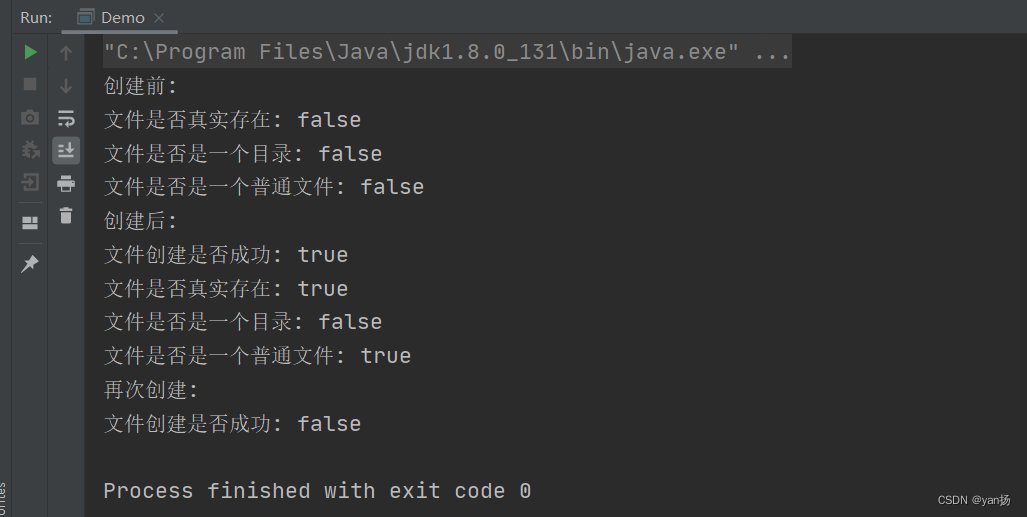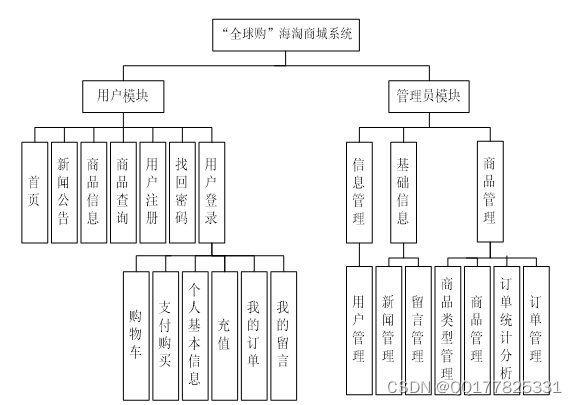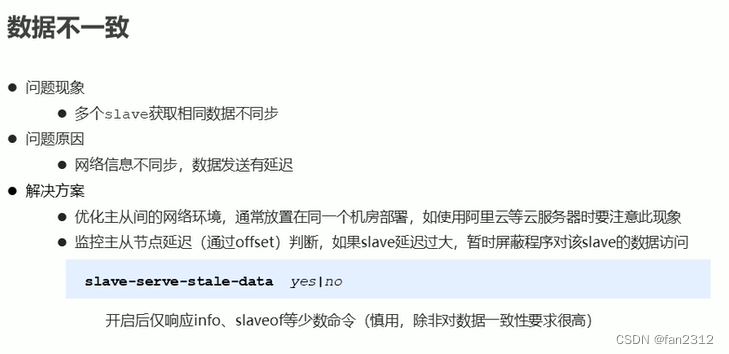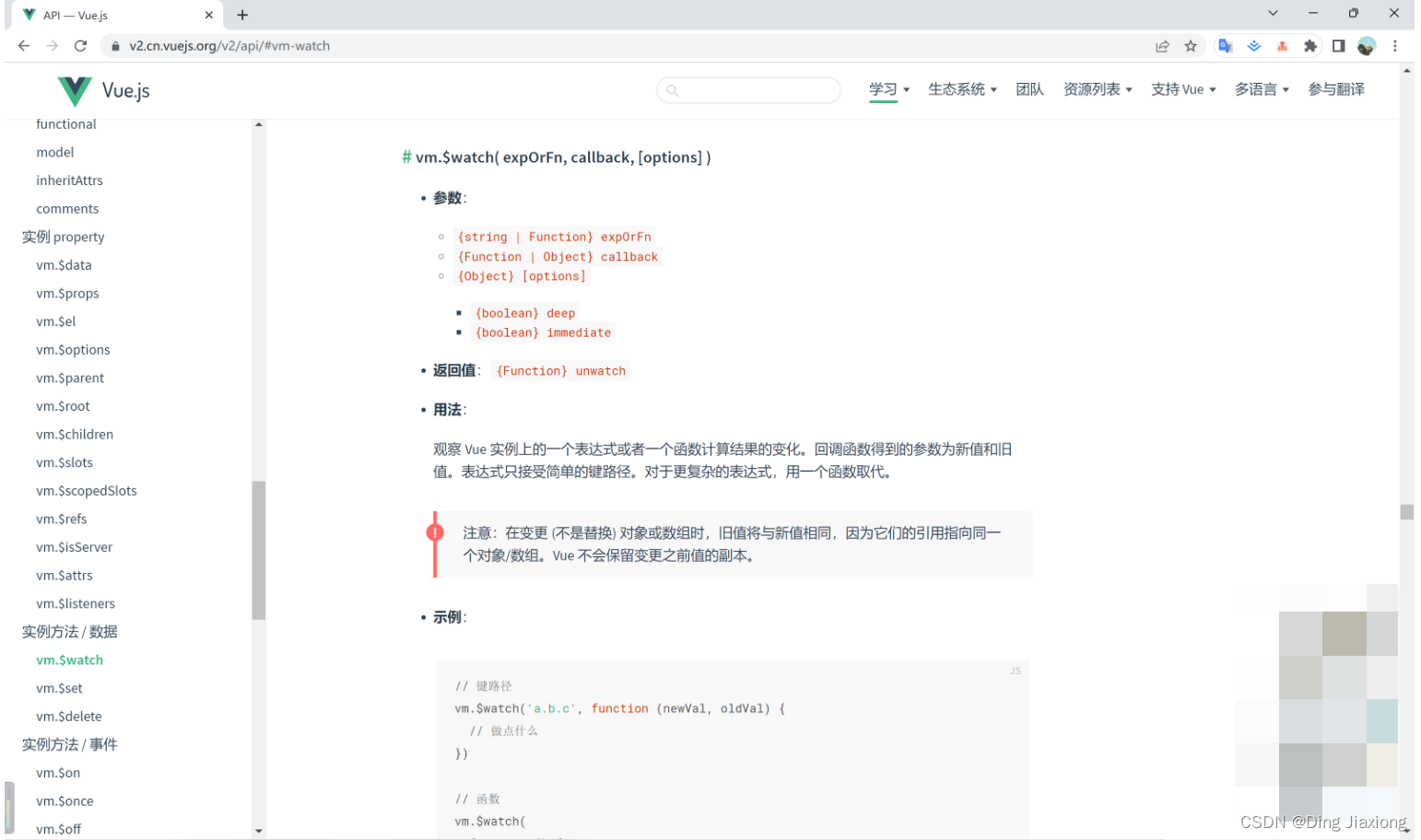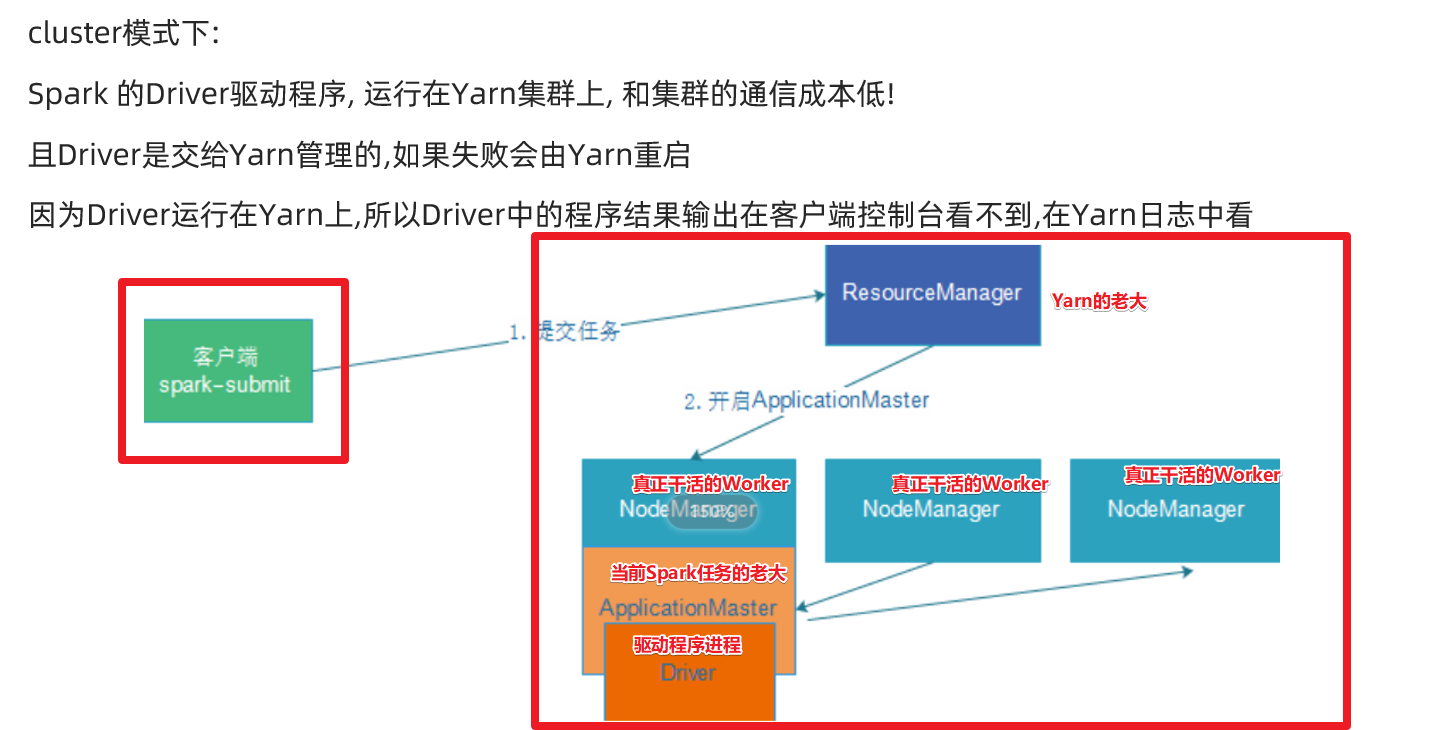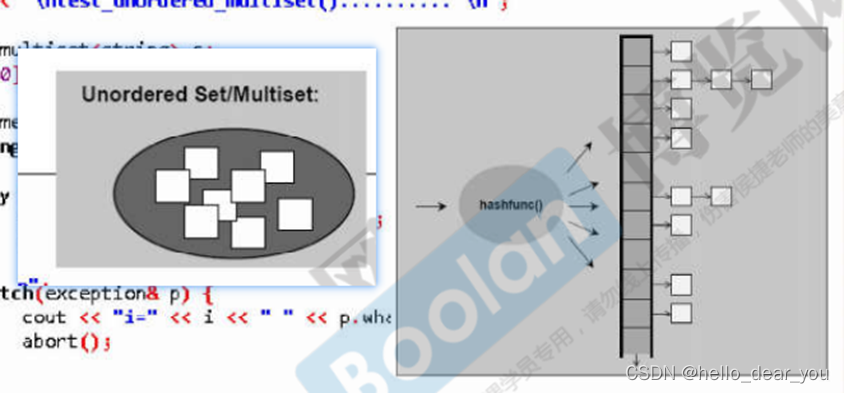一、网络设备的系统框图

MAC:工作在网络模型的数据链路层,通过 RGMII 或 RMII 接口连接 PHY,MAC 控制器中的 MDIO 控制器提供 MDIO 接口,用于访问 PHY 寄存器。
PHY:工作在网络模型的物理层,是 IEEE802.3 规定的一个标准模块。IEEE802.3 规定了 地址 0~15 共 16 个通用寄存器,只要配置好这些通用寄存器就能保证 PHY 芯片正常工作。16~31 地址的寄存器有厂家自行定义。
二、以太网MII接口
扫盲-以太网MII接口类型大全-MII、RMII、SMII、GMII、RGMII、SGMII、XGMII、XAUI、RXAUI_heat.huang的博客-CSDN博客_rmii接口中的参考时钟频率
三、RJ45 接口
网络RJ45接口详解_迎客松88的博客-CSDN博客_rj45接口定义
四、PHY 芯片
1、PHY 基础知识
PHY 是 IEEE 802.3 规定的一个标准模块。SOC 可以对 PHY 进行配置或者读取 PHY 相关状态,这个就需要 PHY 内部寄存器去实现了。 PHY 芯片寄存器地址空间为 5 位,地址 0~31 共 32 个寄存器, IEEE 定义了 0~15 这 16 个寄存器的功能, 16~31 这 16 个寄存器由厂商自行实现。 也就是说不管你用的哪个厂家的 PHY 芯片,其中 0~15 这 16 个寄存器是一模一样的。仅靠这 16 个寄存器是完全可以驱动起 PHY 芯片的,至少能保证基本的网络数据通信,因此 Linux 内核有通用 PHY 驱动,按道理来讲,不管你使用的哪个厂家的 PHY 芯片,都可以使用 Linux 的这个通用 PHY 驱动来验证网络工作是否正常。
事实上在实际开发中可能会遇到一些其他的问题导致 Linux 内核的通用 PHY 驱动工作不正常,这个时候就需要驱动开发人员去调
试了。
2、PHY 芯片寄存器相关说明
phy基础知识总结 common register总结_hello-Will的博客-CSDN博客
五、LAN8720A
详细信息参考 LAN8720A 官方手册。
六、Linux 网络驱动框架
1、网络设备
/**
* struct net_device - The DEVICE structure.
* Actually, this whole structure is a big mistake. It mixes I/O
* data with strictly "high-level" data, and it has to know about
* almost every data structure used in the INET module.
*
* @name: This is the first field of the "visible" part of this structure
* (i.e. as seen by users in the "Space.c" file). It is the name
* of the interface.
*
* @name_hlist: Device name hash chain, please keep it close to name[]
* @ifalias: SNMP alias
* @mem_end: Shared memory end
* @mem_start: Shared memory start
* @base_addr: Device I/O address
* @irq: Device IRQ number
*
* @carrier_changes: Stats to monitor carrier on<->off transitions
*
* @state: Generic network queuing layer state, see netdev_state_t
* @dev_list: The global list of network devices
* @napi_list: List entry, that is used for polling napi devices
* @unreg_list: List entry, that is used, when we are unregistering the
* device, see the function unregister_netdev
* @close_list: List entry, that is used, when we are closing the device
*
* @adj_list: Directly linked devices, like slaves for bonding
* @all_adj_list: All linked devices, *including* neighbours
* @features: Currently active device features
* @hw_features: User-changeable features
*
* @wanted_features: User-requested features
* @vlan_features: Mask of features inheritable by VLAN devices
*
* @hw_enc_features: Mask of features inherited by encapsulating devices
* This field indicates what encapsulation
* offloads the hardware is capable of doing,
* and drivers will need to set them appropriately.
*
* @mpls_features: Mask of features inheritable by MPLS
*
* @ifindex: interface index
* @group: The group, that the device belongs to
*
* @stats: Statistics struct, which was left as a legacy, use
* rtnl_link_stats64 instead
*
* @rx_dropped: Dropped packets by core network,
* do not use this in drivers
* @tx_dropped: Dropped packets by core network,
* do not use this in drivers
*
* @wireless_handlers: List of functions to handle Wireless Extensions,
* instead of ioctl,
* see <net/iw_handler.h> for details.
* @wireless_data: Instance data managed by the core of wireless extensions
*
* @netdev_ops: Includes several pointers to callbacks,
* if one wants to override the ndo_*() functions
* @ethtool_ops: Management operations
* @header_ops: Includes callbacks for creating,parsing,caching,etc
* of Layer 2 headers.
*
* @flags: Interface flags (a la BSD)
* @priv_flags: Like 'flags' but invisible to userspace,
* see if.h for the definitions
* @gflags: Global flags ( kept as legacy )
* @padded: How much padding added by alloc_netdev()
* @operstate: RFC2863 operstate
* @link_mode: Mapping policy to operstate
* @if_port: Selectable AUI, TP, ...
* @dma: DMA channel
* @mtu: Interface MTU value
* @type: Interface hardware type
* @hard_header_len: Hardware header length
*
* @needed_headroom: Extra headroom the hardware may need, but not in all
* cases can this be guaranteed
* @needed_tailroom: Extra tailroom the hardware may need, but not in all
* cases can this be guaranteed. Some cases also use
* LL_MAX_HEADER instead to allocate the skb
*
* interface address info:
*
* @perm_addr: Permanent hw address
* @addr_assign_type: Hw address assignment type
* @addr_len: Hardware address length
* @neigh_priv_len; Used in neigh_alloc(),
* initialized only in atm/clip.c
* @dev_id: Used to differentiate devices that share
* the same link layer address
* @dev_port: Used to differentiate devices that share
* the same function
* @addr_list_lock: XXX: need comments on this one
* @uc_promisc: Counter, that indicates, that promiscuous mode
* has been enabled due to the need to listen to
* additional unicast addresses in a device that
* does not implement ndo_set_rx_mode()
* @uc: unicast mac addresses
* @mc: multicast mac addresses
* @dev_addrs: list of device hw addresses
* @queues_kset: Group of all Kobjects in the Tx and RX queues
* @promiscuity: Number of times, the NIC is told to work in
* Promiscuous mode, if it becomes 0 the NIC will
* exit from working in Promiscuous mode
* @allmulti: Counter, enables or disables allmulticast mode
*
* @vlan_info: VLAN info
* @dsa_ptr: dsa specific data
* @tipc_ptr: TIPC specific data
* @atalk_ptr: AppleTalk link
* @ip_ptr: IPv4 specific data
* @dn_ptr: DECnet specific data
* @ip6_ptr: IPv6 specific data
* @ax25_ptr: AX.25 specific data
* @ieee80211_ptr: IEEE 802.11 specific data, assign before registering
*
* @last_rx: Time of last Rx
* @dev_addr: Hw address (before bcast,
* because most packets are unicast)
*
* @_rx: Array of RX queues
* @num_rx_queues: Number of RX queues
* allocated at register_netdev() time
* @real_num_rx_queues: Number of RX queues currently active in device
*
* @rx_handler: handler for received packets
* @rx_handler_data: XXX: need comments on this one
* @ingress_queue: XXX: need comments on this one
* @broadcast: hw bcast address
*
* @rx_cpu_rmap: CPU reverse-mapping for RX completion interrupts,
* indexed by RX queue number. Assigned by driver.
* This must only be set if the ndo_rx_flow_steer
* operation is defined
* @index_hlist: Device index hash chain
*
* @_tx: Array of TX queues
* @num_tx_queues: Number of TX queues allocated at alloc_netdev_mq() time
* @real_num_tx_queues: Number of TX queues currently active in device
* @qdisc: Root qdisc from userspace point of view
* @tx_queue_len: Max frames per queue allowed
* @tx_global_lock: XXX: need comments on this one
*
* @xps_maps: XXX: need comments on this one
*
* @trans_start: Time (in jiffies) of last Tx
* @watchdog_timeo: Represents the timeout that is used by
* the watchdog ( see dev_watchdog() )
* @watchdog_timer: List of timers
*
* @pcpu_refcnt: Number of references to this device
* @todo_list: Delayed register/unregister
* @link_watch_list: XXX: need comments on this one
*
* @reg_state: Register/unregister state machine
* @dismantle: Device is going to be freed
* @rtnl_link_state: This enum represents the phases of creating
* a new link
*
* @destructor: Called from unregister,
* can be used to call free_netdev
* @npinfo: XXX: need comments on this one
* @nd_net: Network namespace this network device is inside
*
* @ml_priv: Mid-layer private
* @lstats: Loopback statistics
* @tstats: Tunnel statistics
* @dstats: Dummy statistics
* @vstats: Virtual ethernet statistics
*
* @garp_port: GARP
* @mrp_port: MRP
*
* @dev: Class/net/name entry
* @sysfs_groups: Space for optional device, statistics and wireless
* sysfs groups
*
* @sysfs_rx_queue_group: Space for optional per-rx queue attributes
* @rtnl_link_ops: Rtnl_link_ops
*
* @gso_max_size: Maximum size of generic segmentation offload
* @gso_max_segs: Maximum number of segments that can be passed to the
* NIC for GSO
* @gso_min_segs: Minimum number of segments that can be passed to the
* NIC for GSO
*
* @dcbnl_ops: Data Center Bridging netlink ops
* @num_tc: Number of traffic classes in the net device
* @tc_to_txq: XXX: need comments on this one
* @prio_tc_map XXX: need comments on this one
*
* @fcoe_ddp_xid: Max exchange id for FCoE LRO by ddp
*
* @priomap: XXX: need comments on this one
* @phydev: Physical device may attach itself
* for hardware timestamping
*
* @qdisc_tx_busylock: XXX: need comments on this one
*
* FIXME: cleanup struct net_device such that network protocol info
* moves out.
*/
struct net_device {
char name[IFNAMSIZ];
struct hlist_node name_hlist;
char *ifalias;
/*
* I/O specific fields
* FIXME: Merge these and struct ifmap into one
*/
unsigned long mem_end;
unsigned long mem_start;
unsigned long base_addr;
int irq;
atomic_t carrier_changes;
/*
* Some hardware also needs these fields (state,dev_list,
* napi_list,unreg_list,close_list) but they are not
* part of the usual set specified in Space.c.
*/
unsigned long state;
struct list_head dev_list;
struct list_head napi_list;
struct list_head unreg_list;
struct list_head close_list;
struct list_head ptype_all;
struct list_head ptype_specific;
struct {
struct list_head upper;
struct list_head lower;
} adj_list;
struct {
struct list_head upper;
struct list_head lower;
} all_adj_list;
netdev_features_t features;
netdev_features_t hw_features;
netdev_features_t wanted_features;
netdev_features_t vlan_features;
netdev_features_t hw_enc_features;
netdev_features_t mpls_features;
int ifindex;
int group;
struct net_device_stats stats;
atomic_long_t rx_dropped;
atomic_long_t tx_dropped;
#ifdef CONFIG_WIRELESS_EXT
const struct iw_handler_def * wireless_handlers;
struct iw_public_data * wireless_data;
#endif
const struct net_device_ops *netdev_ops;
const struct ethtool_ops *ethtool_ops;
#ifdef CONFIG_NET_SWITCHDEV
const struct swdev_ops *swdev_ops;
#endif
const struct header_ops *header_ops;
unsigned int flags;
unsigned int priv_flags;
unsigned short gflags;
unsigned short padded;
unsigned char operstate;
unsigned char link_mode;
unsigned char if_port;
unsigned char dma;
unsigned int mtu;
unsigned short type;
unsigned short hard_header_len;
unsigned short needed_headroom;
unsigned short needed_tailroom;
/* Interface address info. */
unsigned char perm_addr[MAX_ADDR_LEN];
unsigned char addr_assign_type;
unsigned char addr_len;
unsigned short neigh_priv_len;
unsigned short dev_id;
unsigned short dev_port;
spinlock_t addr_list_lock;
unsigned char name_assign_type;
bool uc_promisc;
struct netdev_hw_addr_list uc;
struct netdev_hw_addr_list mc;
struct netdev_hw_addr_list dev_addrs;
#ifdef CONFIG_SYSFS
struct kset *queues_kset;
#endif
unsigned int promiscuity;
unsigned int allmulti;
/* Protocol specific pointers */
#if IS_ENABLED(CONFIG_VLAN_8021Q)
struct vlan_info __rcu *vlan_info;
#endif
#if IS_ENABLED(CONFIG_NET_DSA)
struct dsa_switch_tree *dsa_ptr;
#endif
#if IS_ENABLED(CONFIG_TIPC)
struct tipc_bearer __rcu *tipc_ptr;
#endif
void *atalk_ptr;
struct in_device __rcu *ip_ptr;
struct dn_dev __rcu *dn_ptr;
struct inet6_dev __rcu *ip6_ptr;
void *ax25_ptr;
struct wireless_dev *ieee80211_ptr;
struct wpan_dev *ieee802154_ptr;
#if IS_ENABLED(CONFIG_MPLS_ROUTING)
struct mpls_dev __rcu *mpls_ptr;
#endif
/*
* Cache lines mostly used on receive path (including eth_type_trans())
*/
unsigned long last_rx;
/* Interface address info used in eth_type_trans() */
unsigned char *dev_addr;
#ifdef CONFIG_SYSFS
struct netdev_rx_queue *_rx;
unsigned int num_rx_queues;
unsigned int real_num_rx_queues;
#endif
unsigned long gro_flush_timeout;
rx_handler_func_t __rcu *rx_handler;
void __rcu *rx_handler_data;
struct netdev_queue __rcu *ingress_queue;
unsigned char broadcast[MAX_ADDR_LEN];
#ifdef CONFIG_RFS_ACCEL
struct cpu_rmap *rx_cpu_rmap;
#endif
struct hlist_node index_hlist;
/*
* Cache lines mostly used on transmit path
*/
struct netdev_queue *_tx ____cacheline_aligned_in_smp;
unsigned int num_tx_queues;
unsigned int real_num_tx_queues;
struct Qdisc *qdisc;
unsigned long tx_queue_len;
spinlock_t tx_global_lock;
int watchdog_timeo;
#ifdef CONFIG_XPS
struct xps_dev_maps __rcu *xps_maps;
#endif
/* These may be needed for future network-power-down code. */
/*
* trans_start here is expensive for high speed devices on SMP,
* please use netdev_queue->trans_start instead.
*/
unsigned long trans_start;
struct timer_list watchdog_timer;
int __percpu *pcpu_refcnt;
struct list_head todo_list;
struct list_head link_watch_list;
enum { NETREG_UNINITIALIZED=0,
NETREG_REGISTERED, /* completed register_netdevice */
NETREG_UNREGISTERING, /* called unregister_netdevice */
NETREG_UNREGISTERED, /* completed unregister todo */
NETREG_RELEASED, /* called free_netdev */
NETREG_DUMMY, /* dummy device for NAPI poll */
} reg_state:8;
bool dismantle;
enum {
RTNL_LINK_INITIALIZED,
RTNL_LINK_INITIALIZING,
} rtnl_link_state:16;
void (*destructor)(struct net_device *dev);
#ifdef CONFIG_NETPOLL
struct netpoll_info __rcu *npinfo;
#endif
possible_net_t nd_net;
/* mid-layer private */
union {
void *ml_priv;
struct pcpu_lstats __percpu *lstats;
struct pcpu_sw_netstats __percpu *tstats;
struct pcpu_dstats __percpu *dstats;
struct pcpu_vstats __percpu *vstats;
};
struct garp_port __rcu *garp_port;
struct mrp_port __rcu *mrp_port;
struct device dev;
const struct attribute_group *sysfs_groups[4];
const struct attribute_group *sysfs_rx_queue_group;
const struct rtnl_link_ops *rtnl_link_ops;
/* for setting kernel sock attribute on TCP connection setup */
#define GSO_MAX_SIZE 65536
unsigned int gso_max_size;
#define GSO_MAX_SEGS 65535
u16 gso_max_segs;
u16 gso_min_segs;
#ifdef CONFIG_DCB
const struct dcbnl_rtnl_ops *dcbnl_ops;
#endif
u8 num_tc;
struct netdev_tc_txq tc_to_txq[TC_MAX_QUEUE];
u8 prio_tc_map[TC_BITMASK + 1];
#if IS_ENABLED(CONFIG_FCOE)
unsigned int fcoe_ddp_xid;
#endif
#if IS_ENABLED(CONFIG_CGROUP_NET_PRIO)
struct netprio_map __rcu *priomap;
#endif
struct phy_device *phydev;
struct lock_class_key *qdisc_tx_busylock;
};
2、网络操作集
/*
* This structure defines the management hooks for network devices.
* The following hooks can be defined; unless noted otherwise, they are
* optional and can be filled with a null pointer.
*
* int (*ndo_init)(struct net_device *dev);
* This function is called once when network device is registered.
* The network device can use this to any late stage initializaton
* or semantic validattion. It can fail with an error code which will
* be propogated back to register_netdev
*
* void (*ndo_uninit)(struct net_device *dev);
* This function is called when device is unregistered or when registration
* fails. It is not called if init fails.
*
* int (*ndo_open)(struct net_device *dev);
* This function is called when network device transistions to the up
* state.
*
* int (*ndo_stop)(struct net_device *dev);
* This function is called when network device transistions to the down
* state.
*
* netdev_tx_t (*ndo_start_xmit)(struct sk_buff *skb,
* struct net_device *dev);
* Called when a packet needs to be transmitted.
* Returns NETDEV_TX_OK. Can return NETDEV_TX_BUSY, but you should stop
* the queue before that can happen; it's for obsolete devices and weird
* corner cases, but the stack really does a non-trivial amount
* of useless work if you return NETDEV_TX_BUSY.
* (can also return NETDEV_TX_LOCKED iff NETIF_F_LLTX)
* Required can not be NULL.
*
* u16 (*ndo_select_queue)(struct net_device *dev, struct sk_buff *skb,
* void *accel_priv, select_queue_fallback_t fallback);
* Called to decide which queue to when device supports multiple
* transmit queues.
*
* void (*ndo_change_rx_flags)(struct net_device *dev, int flags);
* This function is called to allow device receiver to make
* changes to configuration when multicast or promiscious is enabled.
*
* void (*ndo_set_rx_mode)(struct net_device *dev);
* This function is called device changes address list filtering.
* If driver handles unicast address filtering, it should set
* IFF_UNICAST_FLT to its priv_flags.
*
* int (*ndo_set_mac_address)(struct net_device *dev, void *addr);
* This function is called when the Media Access Control address
* needs to be changed. If this interface is not defined, the
* mac address can not be changed.
*
* int (*ndo_validate_addr)(struct net_device *dev);
* Test if Media Access Control address is valid for the device.
*
* int (*ndo_do_ioctl)(struct net_device *dev, struct ifreq *ifr, int cmd);
* Called when a user request an ioctl which can't be handled by
* the generic interface code. If not defined ioctl's return
* not supported error code.
*
* int (*ndo_set_config)(struct net_device *dev, struct ifmap *map);
* Used to set network devices bus interface parameters. This interface
* is retained for legacy reason, new devices should use the bus
* interface (PCI) for low level management.
*
* int (*ndo_change_mtu)(struct net_device *dev, int new_mtu);
* Called when a user wants to change the Maximum Transfer Unit
* of a device. If not defined, any request to change MTU will
* will return an error.
*
* void (*ndo_tx_timeout)(struct net_device *dev);
* Callback uses when the transmitter has not made any progress
* for dev->watchdog ticks.
*
* struct rtnl_link_stats64* (*ndo_get_stats64)(struct net_device *dev,
* struct rtnl_link_stats64 *storage);
* struct net_device_stats* (*ndo_get_stats)(struct net_device *dev);
* Called when a user wants to get the network device usage
* statistics. Drivers must do one of the following:
* 1. Define @ndo_get_stats64 to fill in a zero-initialised
* rtnl_link_stats64 structure passed by the caller.
* 2. Define @ndo_get_stats to update a net_device_stats structure
* (which should normally be dev->stats) and return a pointer to
* it. The structure may be changed asynchronously only if each
* field is written atomically.
* 3. Update dev->stats asynchronously and atomically, and define
* neither operation.
*
* int (*ndo_vlan_rx_add_vid)(struct net_device *dev, __be16 proto, u16 vid);
* If device support VLAN filtering this function is called when a
* VLAN id is registered.
*
* int (*ndo_vlan_rx_kill_vid)(struct net_device *dev, __be16 proto, u16 vid);
* If device support VLAN filtering this function is called when a
* VLAN id is unregistered.
*
* void (*ndo_poll_controller)(struct net_device *dev);
*
* SR-IOV management functions.
* int (*ndo_set_vf_mac)(struct net_device *dev, int vf, u8* mac);
* int (*ndo_set_vf_vlan)(struct net_device *dev, int vf, u16 vlan, u8 qos);
* int (*ndo_set_vf_rate)(struct net_device *dev, int vf, int min_tx_rate,
* int max_tx_rate);
* int (*ndo_set_vf_spoofchk)(struct net_device *dev, int vf, bool setting);
* int (*ndo_get_vf_config)(struct net_device *dev,
* int vf, struct ifla_vf_info *ivf);
* int (*ndo_set_vf_link_state)(struct net_device *dev, int vf, int link_state);
* int (*ndo_set_vf_port)(struct net_device *dev, int vf,
* struct nlattr *port[]);
*
* Enable or disable the VF ability to query its RSS Redirection Table and
* Hash Key. This is needed since on some devices VF share this information
* with PF and querying it may adduce a theoretical security risk.
* int (*ndo_set_vf_rss_query_en)(struct net_device *dev, int vf, bool setting);
* int (*ndo_get_vf_port)(struct net_device *dev, int vf, struct sk_buff *skb);
* int (*ndo_setup_tc)(struct net_device *dev, u8 tc)
* Called to setup 'tc' number of traffic classes in the net device. This
* is always called from the stack with the rtnl lock held and netif tx
* queues stopped. This allows the netdevice to perform queue management
* safely.
*
* Fiber Channel over Ethernet (FCoE) offload functions.
* int (*ndo_fcoe_enable)(struct net_device *dev);
* Called when the FCoE protocol stack wants to start using LLD for FCoE
* so the underlying device can perform whatever needed configuration or
* initialization to support acceleration of FCoE traffic.
*
* int (*ndo_fcoe_disable)(struct net_device *dev);
* Called when the FCoE protocol stack wants to stop using LLD for FCoE
* so the underlying device can perform whatever needed clean-ups to
* stop supporting acceleration of FCoE traffic.
*
* int (*ndo_fcoe_ddp_setup)(struct net_device *dev, u16 xid,
* struct scatterlist *sgl, unsigned int sgc);
* Called when the FCoE Initiator wants to initialize an I/O that
* is a possible candidate for Direct Data Placement (DDP). The LLD can
* perform necessary setup and returns 1 to indicate the device is set up
* successfully to perform DDP on this I/O, otherwise this returns 0.
*
* int (*ndo_fcoe_ddp_done)(struct net_device *dev, u16 xid);
* Called when the FCoE Initiator/Target is done with the DDPed I/O as
* indicated by the FC exchange id 'xid', so the underlying device can
* clean up and reuse resources for later DDP requests.
*
* int (*ndo_fcoe_ddp_target)(struct net_device *dev, u16 xid,
* struct scatterlist *sgl, unsigned int sgc);
* Called when the FCoE Target wants to initialize an I/O that
* is a possible candidate for Direct Data Placement (DDP). The LLD can
* perform necessary setup and returns 1 to indicate the device is set up
* successfully to perform DDP on this I/O, otherwise this returns 0.
*
* int (*ndo_fcoe_get_hbainfo)(struct net_device *dev,
* struct netdev_fcoe_hbainfo *hbainfo);
* Called when the FCoE Protocol stack wants information on the underlying
* device. This information is utilized by the FCoE protocol stack to
* register attributes with Fiber Channel management service as per the
* FC-GS Fabric Device Management Information(FDMI) specification.
*
* int (*ndo_fcoe_get_wwn)(struct net_device *dev, u64 *wwn, int type);
* Called when the underlying device wants to override default World Wide
* Name (WWN) generation mechanism in FCoE protocol stack to pass its own
* World Wide Port Name (WWPN) or World Wide Node Name (WWNN) to the FCoE
* protocol stack to use.
*
* RFS acceleration.
* int (*ndo_rx_flow_steer)(struct net_device *dev, const struct sk_buff *skb,
* u16 rxq_index, u32 flow_id);
* Set hardware filter for RFS. rxq_index is the target queue index;
* flow_id is a flow ID to be passed to rps_may_expire_flow() later.
* Return the filter ID on success, or a negative error code.
*
* Slave management functions (for bridge, bonding, etc).
* int (*ndo_add_slave)(struct net_device *dev, struct net_device *slave_dev);
* Called to make another netdev an underling.
*
* int (*ndo_del_slave)(struct net_device *dev, struct net_device *slave_dev);
* Called to release previously enslaved netdev.
*
* Feature/offload setting functions.
* netdev_features_t (*ndo_fix_features)(struct net_device *dev,
* netdev_features_t features);
* Adjusts the requested feature flags according to device-specific
* constraints, and returns the resulting flags. Must not modify
* the device state.
*
* int (*ndo_set_features)(struct net_device *dev, netdev_features_t features);
* Called to update device configuration to new features. Passed
* feature set might be less than what was returned by ndo_fix_features()).
* Must return >0 or -errno if it changed dev->features itself.
*
* int (*ndo_fdb_add)(struct ndmsg *ndm, struct nlattr *tb[],
* struct net_device *dev,
* const unsigned char *addr, u16 vid, u16 flags)
* Adds an FDB entry to dev for addr.
* int (*ndo_fdb_del)(struct ndmsg *ndm, struct nlattr *tb[],
* struct net_device *dev,
* const unsigned char *addr, u16 vid)
* Deletes the FDB entry from dev coresponding to addr.
* int (*ndo_fdb_dump)(struct sk_buff *skb, struct netlink_callback *cb,
* struct net_device *dev, struct net_device *filter_dev,
* int idx)
* Used to add FDB entries to dump requests. Implementers should add
* entries to skb and update idx with the number of entries.
*
* int (*ndo_bridge_setlink)(struct net_device *dev, struct nlmsghdr *nlh,
* u16 flags)
* int (*ndo_bridge_getlink)(struct sk_buff *skb, u32 pid, u32 seq,
* struct net_device *dev, u32 filter_mask,
* int nlflags)
* int (*ndo_bridge_dellink)(struct net_device *dev, struct nlmsghdr *nlh,
* u16 flags);
*
* int (*ndo_change_carrier)(struct net_device *dev, bool new_carrier);
* Called to change device carrier. Soft-devices (like dummy, team, etc)
* which do not represent real hardware may define this to allow their
* userspace components to manage their virtual carrier state. Devices
* that determine carrier state from physical hardware properties (eg
* network cables) or protocol-dependent mechanisms (eg
* USB_CDC_NOTIFY_NETWORK_CONNECTION) should NOT implement this function.
*
* int (*ndo_get_phys_port_id)(struct net_device *dev,
* struct netdev_phys_item_id *ppid);
* Called to get ID of physical port of this device. If driver does
* not implement this, it is assumed that the hw is not able to have
* multiple net devices on single physical port.
*
* void (*ndo_add_vxlan_port)(struct net_device *dev,
* sa_family_t sa_family, __be16 port);
* Called by vxlan to notiy a driver about the UDP port and socket
* address family that vxlan is listnening to. It is called only when
* a new port starts listening. The operation is protected by the
* vxlan_net->sock_lock.
*
* void (*ndo_del_vxlan_port)(struct net_device *dev,
* sa_family_t sa_family, __be16 port);
* Called by vxlan to notify the driver about a UDP port and socket
* address family that vxlan is not listening to anymore. The operation
* is protected by the vxlan_net->sock_lock.
*
* void* (*ndo_dfwd_add_station)(struct net_device *pdev,
* struct net_device *dev)
* Called by upper layer devices to accelerate switching or other
* station functionality into hardware. 'pdev is the lowerdev
* to use for the offload and 'dev' is the net device that will
* back the offload. Returns a pointer to the private structure
* the upper layer will maintain.
* void (*ndo_dfwd_del_station)(struct net_device *pdev, void *priv)
* Called by upper layer device to delete the station created
* by 'ndo_dfwd_add_station'. 'pdev' is the net device backing
* the station and priv is the structure returned by the add
* operation.
* netdev_tx_t (*ndo_dfwd_start_xmit)(struct sk_buff *skb,
* struct net_device *dev,
* void *priv);
* Callback to use for xmit over the accelerated station. This
* is used in place of ndo_start_xmit on accelerated net
* devices.
* netdev_features_t (*ndo_features_check) (struct sk_buff *skb,
* struct net_device *dev
* netdev_features_t features);
* Called by core transmit path to determine if device is capable of
* performing offload operations on a given packet. This is to give
* the device an opportunity to implement any restrictions that cannot
* be otherwise expressed by feature flags. The check is called with
* the set of features that the stack has calculated and it returns
* those the driver believes to be appropriate.
* int (*ndo_set_tx_maxrate)(struct net_device *dev,
* int queue_index, u32 maxrate);
* Called when a user wants to set a max-rate limitation of specific
* TX queue.
* int (*ndo_get_iflink)(const struct net_device *dev);
* Called to get the iflink value of this device.
*/
struct net_device_ops {
int (*ndo_init)(struct net_device *dev);
void (*ndo_uninit)(struct net_device *dev);
int (*ndo_open)(struct net_device *dev);
int (*ndo_stop)(struct net_device *dev);
netdev_tx_t (*ndo_start_xmit) (struct sk_buff *skb,
struct net_device *dev);
u16 (*ndo_select_queue)(struct net_device *dev,
struct sk_buff *skb,
void *accel_priv,
select_queue_fallback_t fallback);
void (*ndo_change_rx_flags)(struct net_device *dev,
int flags);
void (*ndo_set_rx_mode)(struct net_device *dev);
int (*ndo_set_mac_address)(struct net_device *dev,
void *addr);
int (*ndo_validate_addr)(struct net_device *dev);
int (*ndo_do_ioctl)(struct net_device *dev,
struct ifreq *ifr, int cmd);
int (*ndo_set_config)(struct net_device *dev,
struct ifmap *map);
int (*ndo_change_mtu)(struct net_device *dev,
int new_mtu);
int (*ndo_neigh_setup)(struct net_device *dev,
struct neigh_parms *);
void (*ndo_tx_timeout) (struct net_device *dev);
struct rtnl_link_stats64* (*ndo_get_stats64)(struct net_device *dev,
struct rtnl_link_stats64 *storage);
struct net_device_stats* (*ndo_get_stats)(struct net_device *dev);
int (*ndo_vlan_rx_add_vid)(struct net_device *dev,
__be16 proto, u16 vid);
int (*ndo_vlan_rx_kill_vid)(struct net_device *dev,
__be16 proto, u16 vid);
#ifdef CONFIG_NET_POLL_CONTROLLER
void (*ndo_poll_controller)(struct net_device *dev);
int (*ndo_netpoll_setup)(struct net_device *dev,
struct netpoll_info *info);
void (*ndo_netpoll_cleanup)(struct net_device *dev);
#endif
#ifdef CONFIG_NET_RX_BUSY_POLL
int (*ndo_busy_poll)(struct napi_struct *dev);
#endif
int (*ndo_set_vf_mac)(struct net_device *dev,
int queue, u8 *mac);
int (*ndo_set_vf_vlan)(struct net_device *dev,
int queue, u16 vlan, u8 qos);
int (*ndo_set_vf_rate)(struct net_device *dev,
int vf, int min_tx_rate,
int max_tx_rate);
int (*ndo_set_vf_spoofchk)(struct net_device *dev,
int vf, bool setting);
int (*ndo_get_vf_config)(struct net_device *dev,
int vf,
struct ifla_vf_info *ivf);
int (*ndo_set_vf_link_state)(struct net_device *dev,
int vf, int link_state);
int (*ndo_set_vf_port)(struct net_device *dev,
int vf,
struct nlattr *port[]);
int (*ndo_get_vf_port)(struct net_device *dev,
int vf, struct sk_buff *skb);
int (*ndo_set_vf_rss_query_en)(
struct net_device *dev,
int vf, bool setting);
int (*ndo_setup_tc)(struct net_device *dev, u8 tc);
#if IS_ENABLED(CONFIG_FCOE)
int (*ndo_fcoe_enable)(struct net_device *dev);
int (*ndo_fcoe_disable)(struct net_device *dev);
int (*ndo_fcoe_ddp_setup)(struct net_device *dev,
u16 xid,
struct scatterlist *sgl,
unsigned int sgc);
int (*ndo_fcoe_ddp_done)(struct net_device *dev,
u16 xid);
int (*ndo_fcoe_ddp_target)(struct net_device *dev,
u16 xid,
struct scatterlist *sgl,
unsigned int sgc);
int (*ndo_fcoe_get_hbainfo)(struct net_device *dev,
struct netdev_fcoe_hbainfo *hbainfo);
#endif
#if IS_ENABLED(CONFIG_LIBFCOE)
#define NETDEV_FCOE_WWNN 0
#define NETDEV_FCOE_WWPN 1
int (*ndo_fcoe_get_wwn)(struct net_device *dev,
u64 *wwn, int type);
#endif
#ifdef CONFIG_RFS_ACCEL
int (*ndo_rx_flow_steer)(struct net_device *dev,
const struct sk_buff *skb,
u16 rxq_index,
u32 flow_id);
#endif
int (*ndo_add_slave)(struct net_device *dev,
struct net_device *slave_dev);
int (*ndo_del_slave)(struct net_device *dev,
struct net_device *slave_dev);
netdev_features_t (*ndo_fix_features)(struct net_device *dev,
netdev_features_t features);
int (*ndo_set_features)(struct net_device *dev,
netdev_features_t features);
int (*ndo_neigh_construct)(struct neighbour *n);
void (*ndo_neigh_destroy)(struct neighbour *n);
int (*ndo_fdb_add)(struct ndmsg *ndm,
struct nlattr *tb[],
struct net_device *dev,
const unsigned char *addr,
u16 vid,
u16 flags);
int (*ndo_fdb_del)(struct ndmsg *ndm,
struct nlattr *tb[],
struct net_device *dev,
const unsigned char *addr,
u16 vid);
int (*ndo_fdb_dump)(struct sk_buff *skb,
struct netlink_callback *cb,
struct net_device *dev,
struct net_device *filter_dev,
int idx);
int (*ndo_bridge_setlink)(struct net_device *dev,
struct nlmsghdr *nlh,
u16 flags);
int (*ndo_bridge_getlink)(struct sk_buff *skb,
u32 pid, u32 seq,
struct net_device *dev,
u32 filter_mask,
int nlflags);
int (*ndo_bridge_dellink)(struct net_device *dev,
struct nlmsghdr *nlh,
u16 flags);
int (*ndo_change_carrier)(struct net_device *dev,
bool new_carrier);
int (*ndo_get_phys_port_id)(struct net_device *dev,
struct netdev_phys_item_id *ppid);
int (*ndo_get_phys_port_name)(struct net_device *dev,
char *name, size_t len);
void (*ndo_add_vxlan_port)(struct net_device *dev,
sa_family_t sa_family,
__be16 port);
void (*ndo_del_vxlan_port)(struct net_device *dev,
sa_family_t sa_family,
__be16 port);
void* (*ndo_dfwd_add_station)(struct net_device *pdev,
struct net_device *dev);
void (*ndo_dfwd_del_station)(struct net_device *pdev,
void *priv);
netdev_tx_t (*ndo_dfwd_start_xmit) (struct sk_buff *skb,
struct net_device *dev,
void *priv);
int (*ndo_get_lock_subclass)(struct net_device *dev);
netdev_features_t (*ndo_features_check) (struct sk_buff *skb,
struct net_device *dev,
netdev_features_t features);
int (*ndo_set_tx_maxrate)(struct net_device *dev,
int queue_index,
u32 maxrate);
int (*ndo_get_iflink)(const struct net_device *dev);
};
3、信息的载体
/**
* struct sk_buff - socket buffer
* @next: Next buffer in list
* @prev: Previous buffer in list
* @tstamp: Time we arrived/left
* @rbnode: RB tree node, alternative to next/prev for netem/tcp
* @sk: Socket we are owned by
* @dev: Device we arrived on/are leaving by
* @cb: Control buffer. Free for use by every layer. Put private vars here
* @_skb_refdst: destination entry (with norefcount bit)
* @sp: the security path, used for xfrm
* @len: Length of actual data
* @data_len: Data length
* @mac_len: Length of link layer header
* @hdr_len: writable header length of cloned skb
* @csum: Checksum (must include start/offset pair)
* @csum_start: Offset from skb->head where checksumming should start
* @csum_offset: Offset from csum_start where checksum should be stored
* @priority: Packet queueing priority
* @ignore_df: allow local fragmentation
* @cloned: Head may be cloned (check refcnt to be sure)
* @ip_summed: Driver fed us an IP checksum
* @nohdr: Payload reference only, must not modify header
* @nfctinfo: Relationship of this skb to the connection
* @pkt_type: Packet class
* @fclone: skbuff clone status
* @ipvs_property: skbuff is owned by ipvs
* @peeked: this packet has been seen already, so stats have been
* done for it, don't do them again
* @nf_trace: netfilter packet trace flag
* @protocol: Packet protocol from driver
* @destructor: Destruct function
* @nfct: Associated connection, if any
* @nf_bridge: Saved data about a bridged frame - see br_netfilter.c
* @skb_iif: ifindex of device we arrived on
* @tc_index: Traffic control index
* @tc_verd: traffic control verdict
* @hash: the packet hash
* @queue_mapping: Queue mapping for multiqueue devices
* @xmit_more: More SKBs are pending for this queue
* @ndisc_nodetype: router type (from link layer)
* @ooo_okay: allow the mapping of a socket to a queue to be changed
* @l4_hash: indicate hash is a canonical 4-tuple hash over transport
* ports.
* @sw_hash: indicates hash was computed in software stack
* @wifi_acked_valid: wifi_acked was set
* @wifi_acked: whether frame was acked on wifi or not
* @no_fcs: Request NIC to treat last 4 bytes as Ethernet FCS
* @napi_id: id of the NAPI struct this skb came from
* @secmark: security marking
* @mark: Generic packet mark
* @vlan_proto: vlan encapsulation protocol
* @vlan_tci: vlan tag control information
* @inner_protocol: Protocol (encapsulation)
* @inner_transport_header: Inner transport layer header (encapsulation)
* @inner_network_header: Network layer header (encapsulation)
* @inner_mac_header: Link layer header (encapsulation)
* @transport_header: Transport layer header
* @network_header: Network layer header
* @mac_header: Link layer header
* @tail: Tail pointer
* @end: End pointer
* @head: Head of buffer
* @data: Data head pointer
* @truesize: Buffer size
* @users: User count - see {datagram,tcp}.c
*/
struct sk_buff {
union {
struct {
/* These two members must be first. */
struct sk_buff *next;
struct sk_buff *prev;
union {
ktime_t tstamp;
struct skb_mstamp skb_mstamp;
};
};
struct rb_node rbnode; /* used in netem & tcp stack */
};
struct sock *sk;
struct net_device *dev;
/*
* This is the control buffer. It is free to use for every
* layer. Please put your private variables there. If you
* want to keep them across layers you have to do a skb_clone()
* first. This is owned by whoever has the skb queued ATM.
*/
char cb[48] __aligned(8);
unsigned long _skb_refdst;
void (*destructor)(struct sk_buff *skb);
#ifdef CONFIG_XFRM
struct sec_path *sp;
#endif
#if defined(CONFIG_NF_CONNTRACK) || defined(CONFIG_NF_CONNTRACK_MODULE)
struct nf_conntrack *nfct;
#endif
#if IS_ENABLED(CONFIG_BRIDGE_NETFILTER)
struct nf_bridge_info *nf_bridge;
#endif
unsigned int len,
data_len;
__u16 mac_len,
hdr_len;
/* Following fields are _not_ copied in __copy_skb_header()
* Note that queue_mapping is here mostly to fill a hole.
*/
kmemcheck_bitfield_begin(flags1);
__u16 queue_mapping;
__u8 cloned:1,
nohdr:1,
fclone:2,
peeked:1,
head_frag:1,
xmit_more:1;
/* one bit hole */
kmemcheck_bitfield_end(flags1);
/* fields enclosed in headers_start/headers_end are copied
* using a single memcpy() in __copy_skb_header()
*/
/* private: */
__u32 headers_start[0];
/* public: */
/* if you move pkt_type around you also must adapt those constants */
#ifdef __BIG_ENDIAN_BITFIELD
#define PKT_TYPE_MAX (7 << 5)
#else
#define PKT_TYPE_MAX 7
#endif
#define PKT_TYPE_OFFSET() offsetof(struct sk_buff, __pkt_type_offset)
__u8 __pkt_type_offset[0];
__u8 pkt_type:3;
__u8 pfmemalloc:1;
__u8 ignore_df:1;
__u8 nfctinfo:3;
__u8 nf_trace:1;
__u8 ip_summed:2;
__u8 ooo_okay:1;
__u8 l4_hash:1;
__u8 sw_hash:1;
__u8 wifi_acked_valid:1;
__u8 wifi_acked:1;
__u8 no_fcs:1;
/* Indicates the inner headers are valid in the skbuff. */
__u8 encapsulation:1;
__u8 encap_hdr_csum:1;
__u8 csum_valid:1;
__u8 csum_complete_sw:1;
__u8 csum_level:2;
__u8 csum_bad:1;
#ifdef CONFIG_IPV6_NDISC_NODETYPE
__u8 ndisc_nodetype:2;
#endif
__u8 ipvs_property:1;
__u8 inner_protocol_type:1;
__u8 remcsum_offload:1;
/* 3 or 5 bit hole */
#ifdef CONFIG_NET_SCHED
__u16 tc_index; /* traffic control index */
#ifdef CONFIG_NET_CLS_ACT
__u16 tc_verd; /* traffic control verdict */
#endif
#endif
union {
__wsum csum;
struct {
__u16 csum_start;
__u16 csum_offset;
};
};
__u32 priority;
int skb_iif;
__u32 hash;
__be16 vlan_proto;
__u16 vlan_tci;
#if defined(CONFIG_NET_RX_BUSY_POLL) || defined(CONFIG_XPS)
union {
unsigned int napi_id;
unsigned int sender_cpu;
};
#endif
#ifdef CONFIG_NETWORK_SECMARK
__u32 secmark;
#endif
union {
__u32 mark;
__u32 reserved_tailroom;
};
union {
__be16 inner_protocol;
__u8 inner_ipproto;
};
__u16 inner_transport_header;
__u16 inner_network_header;
__u16 inner_mac_header;
__be16 protocol;
__u16 transport_header;
__u16 network_header;
__u16 mac_header;
/* private: */
__u32 headers_end[0];
/* public: */
/* These elements must be at the end, see alloc_skb() for details. */
sk_buff_data_t tail;
sk_buff_data_t end;
unsigned char *head,
*data;
unsigned int truesize;
atomic_t users;
};
七、NAPI 处理机制
Linux网络协议栈:NAPI机制与处理流程分析(图解)_rtoax的博客-CSDN博客_netif_napi_add
八、imx6ull 网络设备树说明
参考:Documentation/devicetree/bindings/net/fsl-fec.txt。
九、imx6ull 网络驱动
源码见:drivers\net\ethernet\freescale\fec_main.c。
十、通用 PHY 驱动
源码见:drivers\net\phy\phy_device.c。
十一、LAN8720A 驱动
源码见:drivers\net\phy\smsc.c。
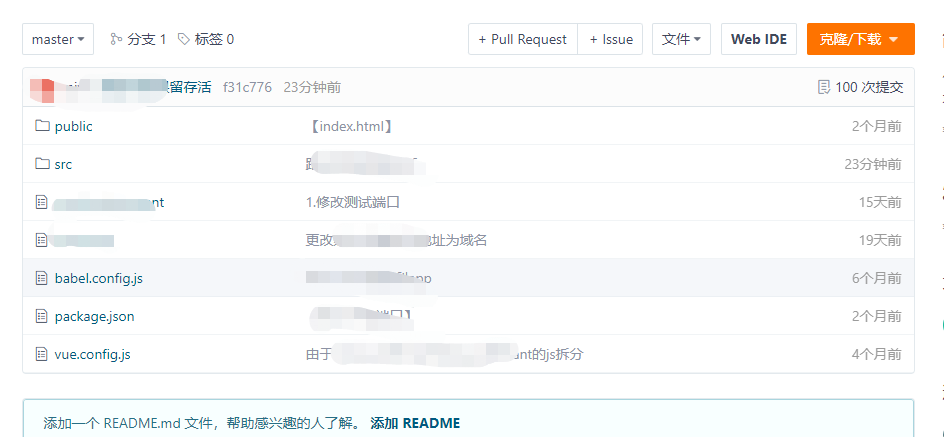


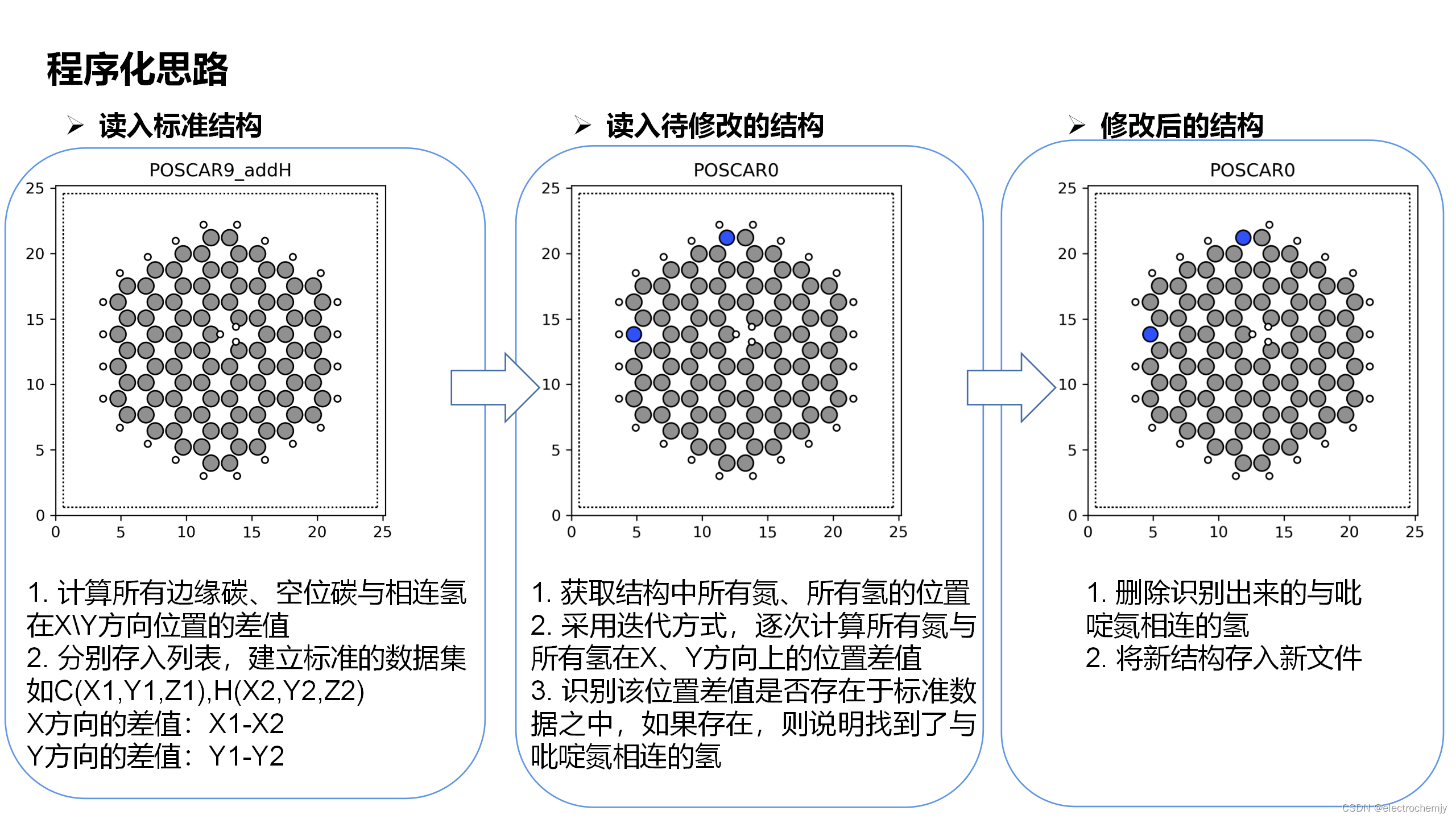
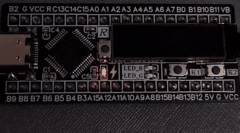
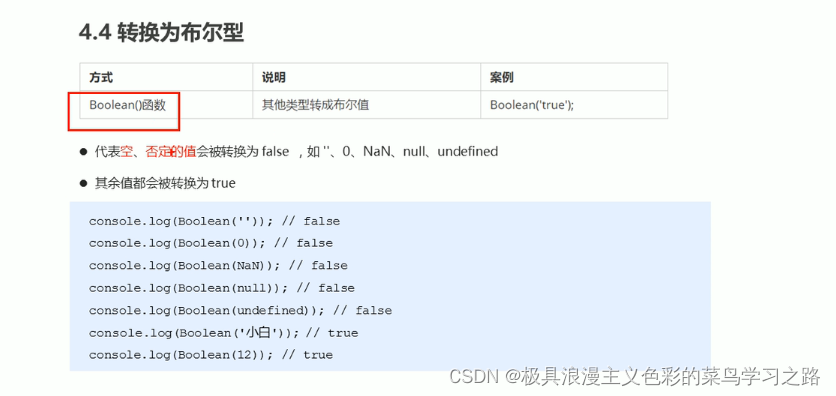

![[附源码]JAVA毕业设计科研项目审批管理系统(系统+LW)](https://img-blog.csdnimg.cn/f2dbe9886f4c4aefa2c4b4f48080dfaa.png)




